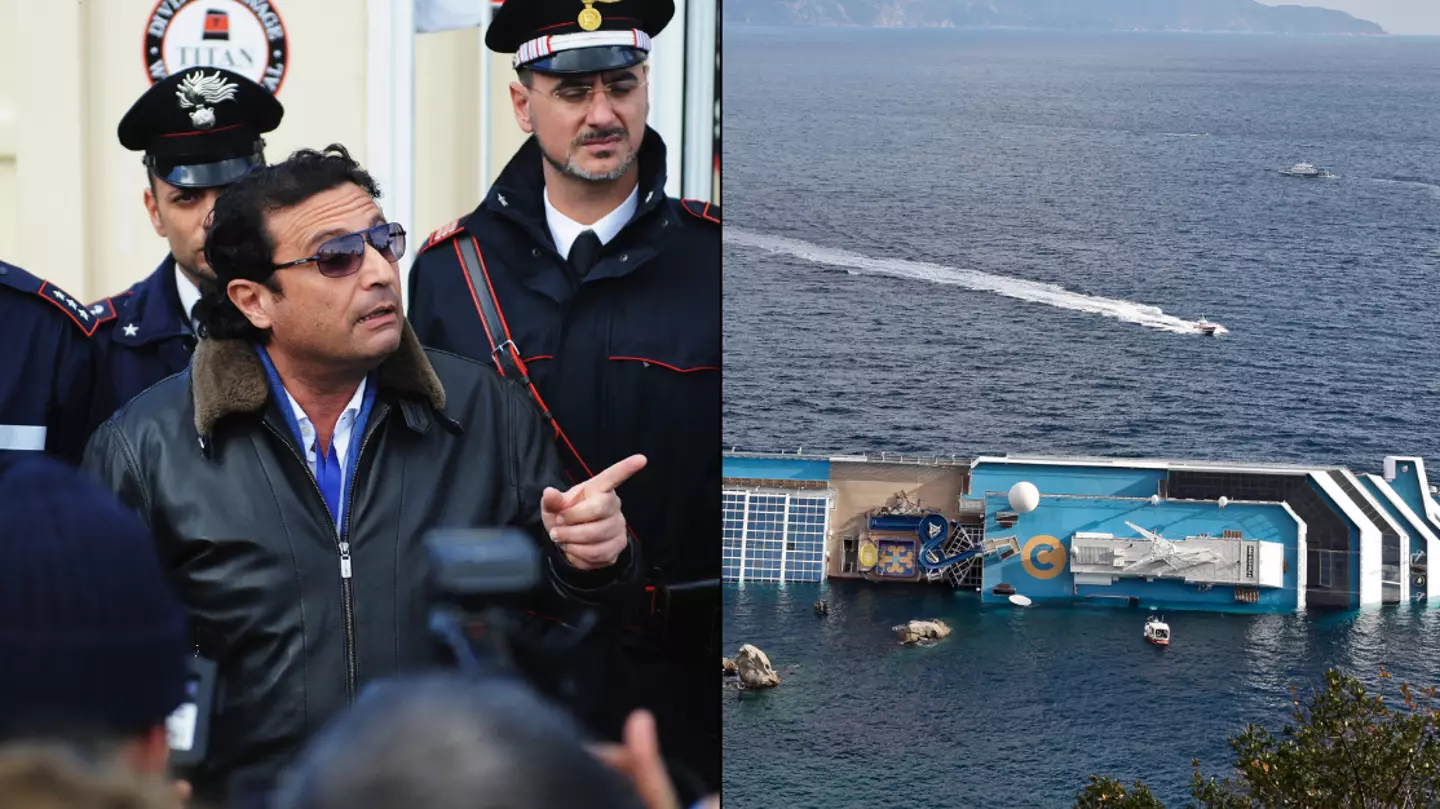Francesco Schettino was dubbed ‘Captain Coward’ after fleeing the Costa Concordia in a lifeboat while the rescue remained ongoing.
From Captain to Convict: A Tragic Fall from Grace
The Costa Concordia disaster shocked the world, not only due to the loss of 33 lives but also because of the actions of its captain, Francesco Schettino. Allegedly attempting to “impress his lover,” the former shipmaster’s decisions turned a luxurious Mediterranean cruise into a deadly tragedy.
Schettino, now 64, was ultimately convicted of manslaughter and abandoning his passengers during the rescue operation. Despite his protests and an exhausting appeals process, he began serving a 16-year sentence in 2017, marking a grim conclusion to his career at sea.
The Fateful Day: When Plans Went Horribly Wrong
On January 13, 2012, the Costa Concordia departed from Civitavecchia, Italy, embarking on what was supposed to be a seven-day Mediterranean cruise. However, mere hours into the journey, Schettino made an unplanned deviation from the ship’s intended course near the holiday island of Giglio.

Claiming he wanted to delight passengers and perform a maritime salute, he steered the vessel dangerously close to the coastline. This maneuver, meant to offer a spectacular view, ended in catastrophe as the ship struck an outcrop of rocks.
A Chain of Deadly Mistakes
The impact tore a massive 35-meter gash in the ship’s side, causing water to flood the engine room and tilting the ship precariously onto an underwater ledge. Chaos erupted as passengers and crew scrambled to evacuate. Schettino’s decision to abandon the ship in a lifeboat, leaving rescue operations unfinished, earned him the nickname “Captain Coward.” He later claimed he “fell” into the lifeboat by accident—a claim met with widespread criticism.
The Alleged Affair: Fact or Distraction?
Adding to the controversy were allegations that Schettino’s actions were driven by a desire to impress Domnica Cemortan, a Moldovan dancer reportedly aboard the ship and involved in a romantic relationship with him. Cemortan admitted to the affair in court but denied being a distraction at the time of the crash, stating she was not near the captain when the disaster unfolded.
Prosecutors argued otherwise, suggesting Schettino’s proximity to Cemortan influenced his reckless decisions. Despite his denials, the narrative of a distracted captain added fuel to public outrage.
The Investigation: A Disaster Waiting to Happen
An investigative report from Italy’s Ministry of Infrastructures and Transports confirmed that the Costa Concordia had sailed dangerously close to the coastline at night, compounded by inadequate lighting and excessive speed (15.5 knots). These factors contributed significantly to the tragedy.

Schettino defended his actions in court, claiming he aimed to entertain passengers, salute a retired captain living on Giglio, and honor a head waiter from the island. “I wanted to kill three birds with one stone,” he said, dismissing the necessity of informing the ship’s owners of the detour.
The Aftermath: Lives Lost and Billions in Damages
The human toll of the disaster was immense, with 33 lives lost. The body of the final victim was only recovered in November 2014, nearly two years after the tragedy. Financially, the shipwreck cost an estimated $2 billion, adding to the disaster’s staggering impact.
Schettino and several members of his team faced manslaughter charges, leaving a grim legacy behind. While Schettino remains halfway through his prison sentence, the Costa Concordia disaster serves as a sobering reminder of the cost of negligence and recklessness at sea.
A Disaster Etched in History
The Costa Concordia wreck isn’t just a maritime disaster; it’s a cautionary tale of how one person’s choices can lead to unimaginable consequences. From a captain entrusted with the safety of thousands to a convict serving time, Schettino’s fall from grace highlights the weight of responsibility that comes with leadership—and the devastating cost of failing to uphold it.

